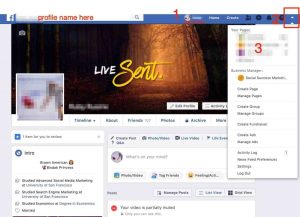
Companies today are experiencing major issues with employee retention. The lure of the gig economy has grown from a “necessary evil” in the aftermath of the recession to a lucrative business opportunity for driven professionals. These individuals seek the flexibility, freedom, self-direction and higher income potential that non-traditional work offers. That’s not such a boon for employers who want full-time people. Staffing professionals benefit from this demand for contingent talent, yet keeping proven performers is just as critical to their success. Right now, employee retention has taken its place as one of the most important topics in conversations about the future of talent, from the political stage to the desks of HR. Let’s look at how staffing experts can individualize and reshape their programs to retain high caliber workers, stellar performance metrics and margins.
Retaining Top Talent Should Top Your Priority List
Businesses are realizing, if they haven’t already, that traditional approaches to recruiting and staffing have become obsolete in the current market. Younger employees are entering the labor force, and they want more career growth, engagement, connectivity and flexibility. The old notions of cubicles and corporate workspaces have not kept up with an environment that now demands remote work and alternative scheduling. Management is struggling to understand, motivate and engage the new breed of talent. And the competition to acquire qualified professionals further complicates the situation.
Attrition, in terms of employee turnover, inevitably leads to the attrition of revenue. In some ways, losing an employee is like losing a wallet filled with cash. The Society for Human Resource Management (SHRM) estimates that it costs $ 3,500.00 to replace one $ 8.00 per hour employee when all costs are considered. Those costs increase exponentially with the rate of the worker. Keeping superior talent, on the other hand, can yield gains of 50 percent to 125 percent over the course of the engagement. Employee turnover costs include:
- Time spent filling the vacancy
- Hours per week lost in productivity
- The time spent, also impacting productivity, to train and orient new talent
- The time needed for administrative and hiring tasks (e.g., advertising, resume screening, interviewing and onboarding)
There are several other, perhaps less obvious, tolls that employee attrition takes on a company. Coworkers, supervisors and managers need to make up for the lost productivity until new talent is prepared to step in and take over. That can lead to overtime and additional shifts, along with the requisite cost increases. Even then, a new worker may need one or two years to reach the level of productivity the former employee exhibited.
Productivity is further sacrificed when existing workers perceive a high rate of turnover; they often disengage. Of course, there also arise cultural concerns as employees question the business environment or the frontline managers.
Customer service issues and other errors may also increase. New employees require time and experience in their new roles to identify and resolve problems. Tenured workers understand the systems, processes and products in place, and have learned how to work in a cohesive team. The learning curve for new talent takes time – and time is money.
Employee Retention Strategies for a New Age
The best client retention strategies today focus on personalized, individualized experiences — creating a delivery process in which customers feel their unique needs are being addressed. The same philosophy holds true for workers. As Larry Alton writes in Forbes, “Individualization accomplishes many goals at once. It demonstrates that your business cares about its employees, and is willing to make sacrifices to keep them on board. It satisfies the modern worker’s need for personal development and freedom. It even helps workers find the work they feel is most rewarding, and accomplish it in more productive ways.”
Here are some strategies that staffing professionals can adopt.
Compensation
Compensation does play a pivotal role in retaining top talent, yet it’s not the deciding factor. For workers who perform at moderate levels, a bump in pay might be more cosmetic than mission critical, something LinkedIn calls “the hygiene factor – too little money will definitely create high churn, but over-compensating people won’t make up for a poor work environment.”
Staffing experts have access to a wide variety of tools and data that can help them assess the skills and capabilities of their talent – performance metrics, attendance, work output, satisfaction and quality. Using this information, they are better equipped to negotiate competitive compensation structures with MSPs and hiring managers for talent with demonstrated abilities and results. Rewarding top performers ensures continued loyalty and performance.
Job Fit
Job fit is paramount. Just as there exists an employee value proposition, there also exists a job value proposition — the employment brand. Placing talent in the best-fit environments for their skills, experiences and professional goals creates lasting satisfaction and engagement. The employment brand sells a company to talent, and authenticity is key:
- What is it like to work here?
- What is the employee culture?
- How are the benefits, perks and work-life balance?
- How supportive is management?
- What are the career paths and advancement opportunities?
Moreover, understanding your client’s employment brand will help you attract the right talent at an equitable price to every stakeholder invested in the program, including the workers.
Remote Work
Although many companies remain reluctant to fully embrace remote work arrangements, workforce studies consistently show how they increase productivity. If the nature of the position you’re filling doesn’t truly warrant a daily physical presence in the office, make the case with hiring managers or MSPs. Compromise is always a good start. Perhaps suggest a schedule where the worker telecommutes two days a week and sits onsite the other three. Pick only a select number of workers. If the arrangement yields positive results, you may convince the client or MSP to increase the number of remote days across a larger group of talent.
Flex Time
Skilled professionals choose contract work for a lot of reasons. Topping that list is flexibility. As Alton notes in his Forbes article, “The strict 9-to-5 work schedules of the past are starting to become obsolete (thanks in part to millennials). With communications technologies being as developed as they are and conventional office-hour problems like traffic and personal errand scheduling constantly interfering with employees’ lives, it’s no wonder why more workers are finding themselves craving an alternative structure.”
Working with hiring managers and MSPs to develop alternative schedules can lead to big wins for all parties. It could be 40 hours spread out over the course of the day, not just between nine and five. It could be leniency for punctuality, occasional short days and more.
Development Opportunities
Career development matters. With Millennials, it matters a lot. They are motivated by an entrepreneurial spirit. They are more willing than generations past to devote themselves to achieving business goals and innovating new opportunities. They value growth, career advancement and purpose. Their strong emphasis on work-life balance and community also translates to a stellar focus on teamwork, collaboration, acculturation and bonding. Not only do these traits fuel productivity, they inspire morale — also critical to a culture of retention and loyalty.
Open Communication
Communication is everything. The Boomers are leaving the playing field and their replacements, the Millennials, are the social generation. They are highly connected to the world through social networks. Communication is a 24/7 facet of their lives. Listening to this new generation of talent and taking their input to heart is the cornerstone of perpetuating their engagement. It’s not all one-sided, though. In exchange, they expect constructive feedback, professional critiques, advice for improvement and visibility into goals and objectives.
Client hiring managers are swamped trying to navigate the rapid tides of market changes, staffing levels and compliance with established metrics. MSPs and staffing professionals are in unique and advantageous positions to facilitate communication, foster continued engagement and steer top talent to increasingly higher levels of success.
Retain Your Talent, Retain Your Performance and Profits
The most successful and enduring organizations are ultimately those in which a common sense of mission and deep respect for talent take center stage. MSPs and staffing professionals have the tools, the acumen, the experience and the skills to fit top talent to highly engaging assignments, carefully selecting the right people for the best clients and positions. By serving as advocates, mentors, facilitators and negotiators, MSPs and their staffing partners can overcome client hiring challenges with professionals who honor their commitments and deliver exceptional results.
Business & Finance Articles on Business 2 Community(52)






